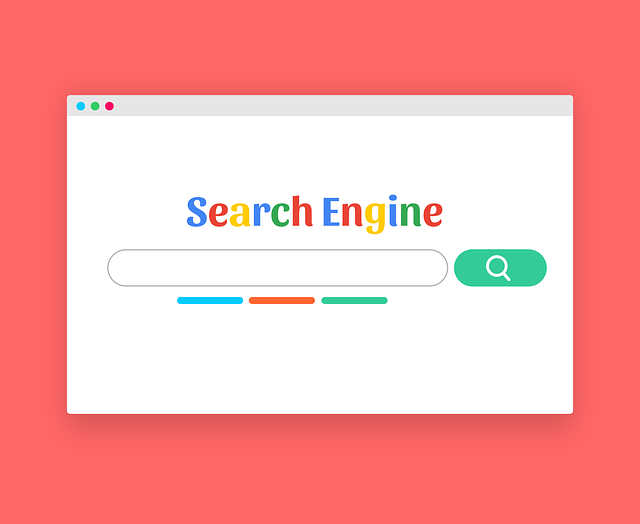An ecommerce search engine is a powerful tool that enhances user experience, boosts sales, and drives revenue growth by leveraging advanced algorithms to interpret user queries and match them with relevant products. Features like autocomplete suggestions and faceted filtering improve accuracy and satisfaction. Optimizing product data, implementing semantic search, and analyzing KPIs like click-through rate (CTR), conversion rate, and average order value (AOV) ensure successful product discovery and customer loyalty. Ultimately, a well-optimized ecommerce search engine transforms websites into dynamic shopping experiences that meet user expectations.
In the dynamic landscape of online retail, an ecommerce search engine is a game-changer. Understanding its basics is crucial for optimizing sales and enhancing user experience. This article explores key features and benefits designed to elevate your online store’s performance. We’ll delve into strategies for improving search results, and highlight metrics for measuring success. By harnessing the power of effective ecommerce search engine optimization, retailers can unlock new levels of customer engagement and drive growth.
- Understanding Ecommerce Search Engine Basics
- Key Features and Benefits for Online Retailers
- Optimizing Your Store for Better Search Results
- Measuring Success and User Experience Improvements
Understanding Ecommerce Search Engine Basics

An ecommerce search engine is a fundamental component that facilitates user navigation and enhances the online shopping experience. It acts as a virtual assistant, allowing customers to quickly find products among vast inventories. At its core, an ecommerce search engine utilizes complex algorithms to understand user queries, matching them with relevant product listings. These algorithms consider various factors such as product titles, descriptions, categories, and even customer reviews to deliver accurate and tailored results.
By mastering the basics of ecommerce search engine functionality, businesses can optimize their online stores. This includes optimizing product data, ensuring consistent and descriptive naming conventions, and incorporating keywords that accurately represent each item. Additionally, implementing advanced features like semantic search, faceted filtering, and personalized recommendations can further improve search accuracy and user satisfaction, ultimately driving sales and fostering customer loyalty.
Key Features and Benefits for Online Retailers

An advanced ecommerce search engine is a powerful tool for online retailers, offering numerous key features and benefits that significantly enhance user experience and drive sales. These engines go beyond basic keyword searches by incorporating sophisticated algorithms to understand user intent, contextual relevance, and semantic similarity. Features like autocomplete suggestions, faceted filtering, and personalized results ensure shoppers can quickly find exactly what they’re looking for – even if they don’t know the exact product name.
By implementing a robust ecommerce search engine, retailers can expect increased customer satisfaction, higher conversion rates, and improved average order values. These search tools also facilitate navigation, especially on large online marketplaces with vast inventories. Additionally, they provide valuable insights into customer behavior through analytics, allowing retailers to optimize their product cataloging, pricing strategies, and marketing campaigns. Ultimately, a well-integrated ecommerce search engine acts as a game-changer, transforming a website from a mere catalog into a dynamic, user-friendly shopping experience.
Optimizing Your Store for Better Search Results

Optimizing your online store for better search results is a strategic move that significantly enhances user experience and drives sales. An efficient ecommerce search engine isn’t just about having a feature; it’s about understanding customer behavior and tailoring your platform to meet their expectations. Start by conducting thorough keyword research, identifying what your target audience uses when searching for products. Incorporate these keywords naturally into product titles, descriptions, and categories. This practice ensures that when potential customers search, your items are more likely to appear in relevant results.
Beyond keywords, ensure your store’s architecture is user-friendly and intuitive. Organize products logically into distinct categories and subcategories, making navigation seamless. Implement filters and sorting options that allow shoppers to refine their searches swiftly. Additionally, high-quality product images with descriptive alt tags can greatly improve search rankings. These visual elements give customers a clearer idea of what they’re searching for, reducing the likelihood of disappointment or needing to return items.
Measuring Success and User Experience Improvements

Measuring success and user experience improvements go hand in hand with an ecommerce search engine. Key performance indicators (KPIs) such as click-through rate (CTR), conversion rate, and average order value (AOV) are essential metrics to track. A high CTR indicates that users are finding relevant products quickly, while a strong conversion rate shows that the search engine is driving sales effectively. By analyzing these metrics, ecommerce businesses can fine-tune their search algorithms and features to better meet customer expectations.
User experience (UX) is paramount in the success of any ecommerce search engine. Features like autocomplete suggestions, filter options, and personalized results contribute to a seamless shopping journey. Continuous UX improvements based on user feedback and behavior data ensure that the search engine remains intuitive and efficient. Ultimately, a well-optimized ecommerce search engine boosts customer satisfaction, fosters brand loyalty, and drives revenue growth for online retailers.
An effective ecommerce search engine is a powerful tool that transforms online shopping experiences, boosting user satisfaction and driving sales. By understanding the basics, leveraging key features, and continually optimizing your store’s search functionality, you can significantly enhance your website’s performance in today’s competitive digital landscape. Implement these strategies to improve user experience and watch your ecommerce business thrive.
